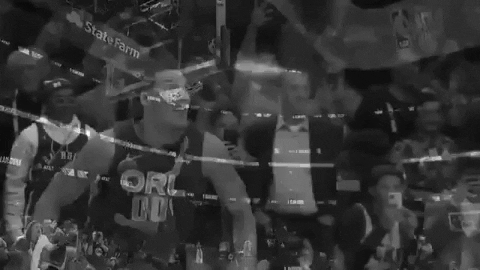Bensational wrote:MagicMatic wrote:
Most current contenders can be traced back to a draft pick origin. It's true that what often vaults a team from playoffs to contenders is having one premier talent, and then being able to another to them. Those additions often come via trade, and often off the back of an asset that was once a draft pick. Look at this year's contenders:
GSW - Curry, Klay, Dray - all drafted. Durant signed as FA.
MIL - Giannis, Brogdon - drafted. Middleton traded with Knight for Jennings (drafted). Bledose traded for Monroe who signed as FA.
TOR - Kawhi traded for DeRozan (drafted). Siakam drafted. Lowry traded for a future 1st. Gasol traded for Val (drafted).
POR - Lillard, McCollum - drafted.
All tying back to draft picks. However... apart from Durant, none of those picks were higher than a #5 pick, and he was the least important name amongst them.
So really, it just emphasises the importance of maximising your picks and getting the best value regardless of where you're drafting, and then handling those assets effectively. This really does highlight that talent can be found all over the draft, and those pieces can still be packaged for other pieces that help you win.
In our case, we've got Gordon who's developing well, and Isaac, Bamba and Fultz who are all still very raw/unproven and developing. That's still 4 pieces that, if managed well, could become or could net us a Kawhi, Middleton, Gasol, etc. We're just in that unfortunate limbo of not knowing what we've got with 3/4's of them.
Nearly every NBA player is drafted, so its not surprising that most contenders can be traced back to a draft pick. Most bottom feeder teams can be traced back to draft picks as well.
All NBA teams are heavily composed of their own drafted players for most seasons, and this composition increases the lower the stage of the teams development. So that they trade their drafted players for other players can pretty much describe a majority of transactions in the NBA.
The difference between the contending teams and the bottom feeders is the development and management of ALL their assets, with the development of their drafted players being a key factor.
The four teams that you listed above reinforces my statement, and the sentiments of all the best player development franchises in the NBA: playing in a competitive context is the best way to develop your players and increase their value; meaningful minutes for +82 games vs teams actually trying is what they preach.
The front offices of those four teams are known for their refusal to stage a prolonged rebuild (aka no tanking). Instead those teams continuously constructed rosters built to play competitive,
even if they were just a fringe playoff team.
• Golden State:
After 16 years of failed rebuilds with tons of losing (with exception of short-lived 2006-08 with one playoff) the Warriors fired Larry Riley and handed reigns to Bob Meyers. Meyers immediately changed how that organization developed their young assets and began reversing the losing culture by making transactions to improve the competitiveness of the team.
Right away he acquired PG Jarrett Jack (29) and PF Carl Landry (29). Two peak prime vets with reputations for leadership and high bbIIQ. The next summer, he traded two 1st Rd Picks (2014, 2017) + a 2nd Rd Pick for 30 year old Andre Iguodala...another player with a reputation of leadership, high bbIQ and fierce competitiveness. Within that competitive culture, he developed and groomed a roster with numerous mid-lottery to 2nd round youth into a dynasty.
• Toronto:
After two tank rebuilds that both cycled to 1st round exit peaks, Toronto hired Masai Ujiri (along with Jeff Weltman) in 2013.
Ujiri was the Denver GM that handled the Carmello drama. He refused to bottom out, getting criticized for "tread milling." That trade happened same time as the Dwightmare in Orlando.
Denver (and Tim Connelly who was groomed by Masai and took over after he left) continued that philosophy and have a .584 winning % (post-Carmello) + have a franchise player in Jokic + a plethora of high quality young players that they found all over draft and have developed in a winning context. In the same span, post-Dwight Orlando (who chose to tank) have a .347 winning % and no visible franchise player.
Toronto after Masai (and Weltman's) arrival, despite every pro tank person laughing at them, chose not to blow it up and bottom out and instead doubled down on keeping that team competitive. This helped them develop their youth (Siakim, VanVleet etc) while keeping the value of all their assets. This is how they acquired Kawhi and Gasol...and are now in the NBA Finals.
...similar paths can be seen with Portland and Milwaukee...both franchises refusing prolonged rebuilds and instead maintaining competitive rosters to develop and maintain or improve the value of all their assets.
I feel confident that Weltman and Hammond, who built or were key in assembling, two of those rosters are following that similar trajectory.















